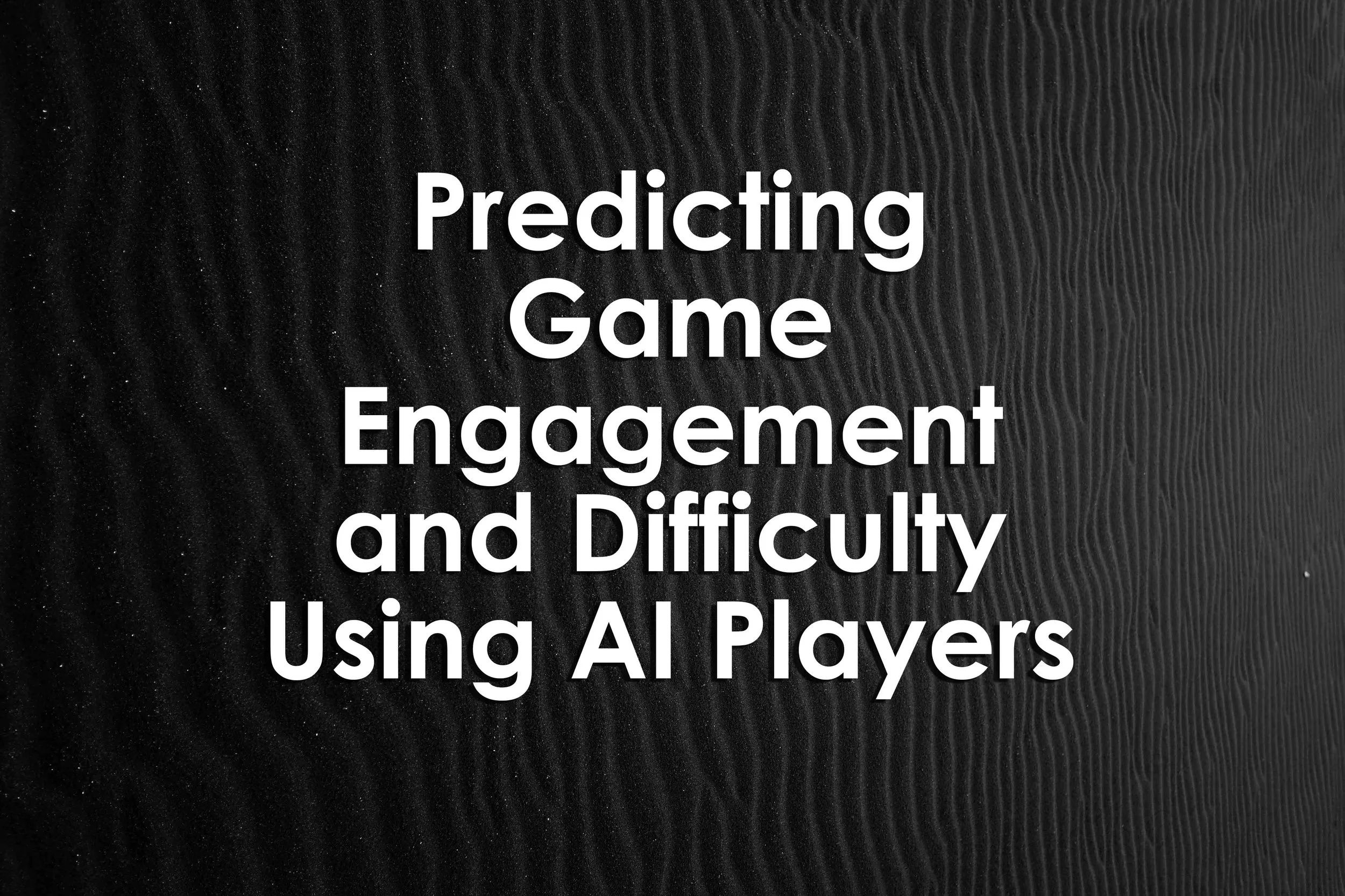Predicting Game Engagement and Difficulty Using AI Players
Predicting Game Engagement and Difficulty Using AI Players
Predicting Game Engagement and Difficulty Using AI Players
By Shaghayegh Roohi, Christian Guckelsberger, Asko Relas, Henri Heiskanen, Jari Takatalo, and Perttu Hämäläinen
Abstract
“This paper presents a novel approach to automated playtesting for the prediction of human player behavior and experience. It has previously been demonstrated that Deep Reinforcement Learning (DRL) game-playing agents can predict both game difficulty and player engagement, operationalized as average pass and churn rates. We improve this approach by enhancing DRL with Monte Carlo Tree Search (MCTS). We also motivate an enhanced selection strategy for predictor features, based on the observation that an AI agent's best-case performance can yield stronger correlations with human data than the agent's average performance. Both additions consistently improve the prediction accuracy, and the DRL-enhanced MCTS outperforms both DRL and vanilla MCTS in the hardest levels. We conclude that player modelling via automated playtesting can benefit from combining DRL and MCTS. Moreover, it can be worthwhile to investigate a subset of repeated best AI agent runs, if AI gameplay does not yield good predictions on average.”
Reference
Roohi, S., Guckelsberger, C., Relas, A., Heiskanen, H., Takatalo, J., &Hämäläinen, P. (2021, July 26). Predicting game engagement and difficulty using AI players. Retrieved March 16, 2022, from https://arxiv.org/abs/2107.12061
Keyword
Games, human player behavior, player modelling, playtesting, research

